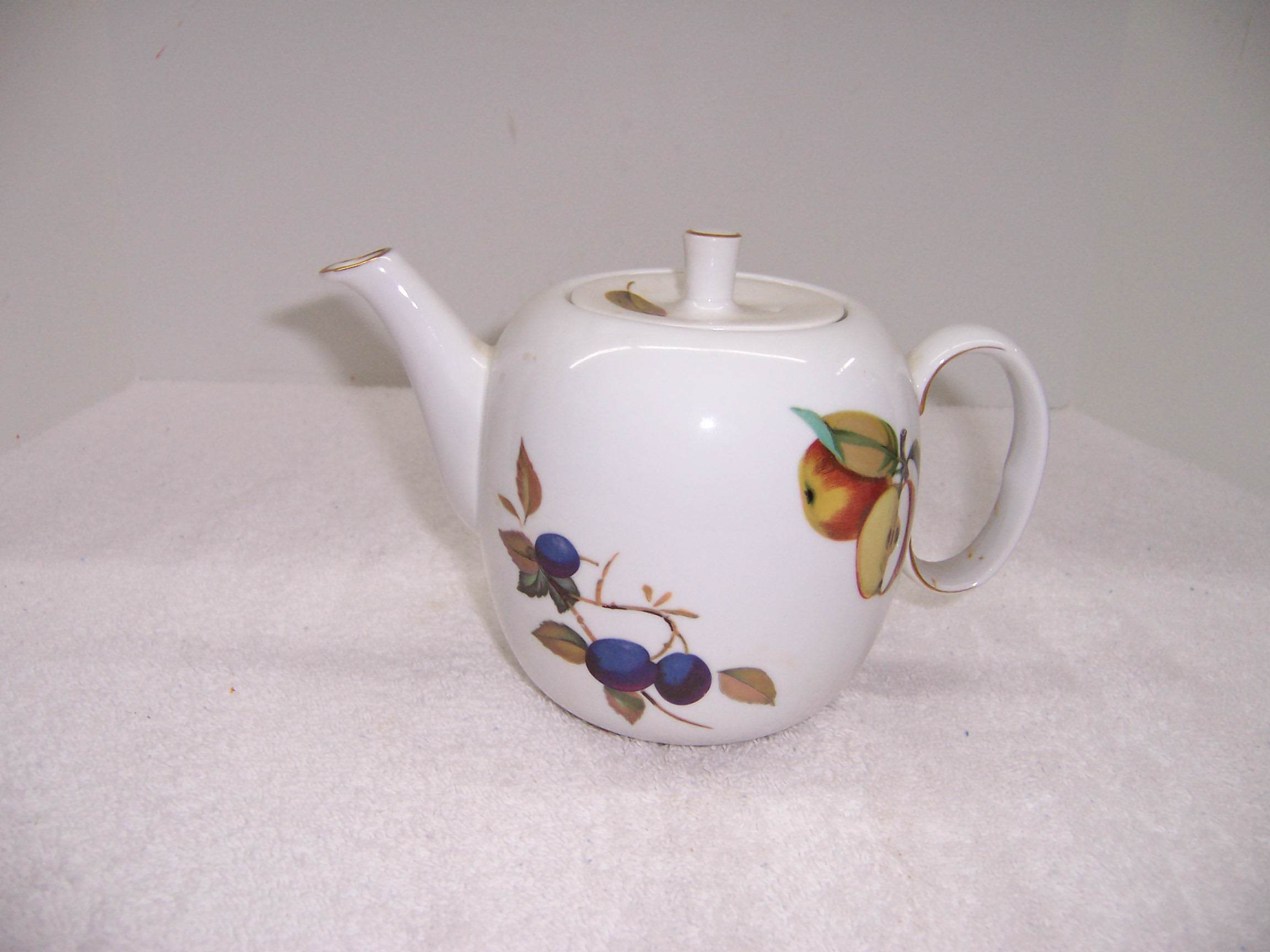Description
Royal Worcester Evesham Gold Teapot in great condition. It measures 5.5″ high x 8″ x 4.75″.
Royal Worcester is believed to be the oldest or second oldest remaining English porcelain brand still in existence today (disputed by Royal Crown Derby 1750 year of establishment).
Overview
Royal Worcester is a British brand known for its history, provenance and classically English collections of porcelain. Now part of the Portmeirion Group, Royal Worcester remains in the luxury tableware and giftware market.
Early history
Worcester Royal Porcelain Company (1751-present). Slipper, ca. 1875. Brooklyn Museum
Dr John Wall, a physician, and William Davis, an apothecary, developed a unique method for producing porcelain and, in 1751, persuaded a group of 13 businessmen to invest in a new factory at Warmstry House, Worcester, England, on the banks of the River Severn. Dr Wall secured the sum of £4500 from the partners to establish the factory, known then as “The Worcester Tonquin Manufactory”; the original partnership deeds are still housed in the Museum of Worcester Porcelain.[1][2]
The Flight and Barr partnerships
In 1783, the factory was purchased by Thomas Flight—the former London sales agent for the concern—for £3,000. He let his two sons run the concern, with John Flight taking the lead role till his death in 1791. In 1788 George III, following a visit to the company, granted it a royal warrant, and it became known as the “Royal Porcelain Works”.[3] Knowledge of this period is largely a result of the excellent diary that John Flight kept from 1785–1791. This is discussed in detail in Appendix III of Flight & Barr Worcester Porcelain by Henry Sandon.
During this period, the factory was in poor repair. Production was limited to low-end patterns of mostly Blue and White porcelains after Chinese porcelain designs of the period. It was also pressured by competition from inexpensive Chinese export porcelains, and from Thomas Turner’s Caughley (pronounced “Calf-ley”) Factory.
Female side of Aesthetic teapot designed by R. W. Binns and modeled by James Hadley, 1881.
Martin Barr joined the firm as a partner in 1792; porcelains of this period are often identified by an incised capital “B” and, later, by more elaborate printed and impressed marks.
Thomas Flight died in 1800, leaving the factory in the hands of his son Joseph Flight and Martin Barr. Barr’s sons Martin Barr Jr. and George Barr were being prepared at that time to run the factory.
In addition to the warrant granted by George III, Royal Warrants were also issued by the Prince of Wales, in 1807,and the Princess of Wales, in 1808.
Pair of “japonist” vases, 1873 (Indianapolis Museum of Art)
Worcester Porcelain Museum
Main article: Worcester Porcelain Museum
The factory’s former site includes the independent Museum of Royal Worcester (formerly known as the ‘Dyson Perrins Museum’and ‘Worcester Porcelain Museum’) owned by the Dyson Perrins Museum Trust.[4] The Museum houses the world’s largest collection of Worcester porcelain. The collections date back to 1751 and the Victorian gallery, the ceramic collections, archives and records of factory production, form the primary resource for the study of Worcester porcelain and its history.
Porcelain painters
Artists and designers who worked for the factory included Thomas Baxter, William Billingsley, John Stinton, David Bates, James Hadley, Christopher Dresser.Charles Baldwin
Modern history
In the 20th century Royal Worcester’s most popular pattern has been “Evesham Gold”, first offered in 1961, depicting the autumnal fruits of the Vale of Evesham with fine gold banding on an “oven to table” body.[5]
After the 1976 merger with Spode,[6] and due to heavy competiion from overseas, the production was switched to factories in Stoke and abroad. 100 staff were made redundant in 2003 and another 100 went in 2005. Fifteen porcelain painters left the Severn Street factory on Friday 29 September 2006, together with 100 other workers.[7] The last trading date for Royal Worcester was 14 June 2009.
The company went into administration on 6 November 2008 and on 23 April 2009 the brand name and intellectual property were acquired by Portmeirion Pottery Group – a pottery and homewares company based in Stoke-on-Trent. As Portmeirion Group has a factory in Stoke-on-Trent, the purchase did not include Royal Worcester and Spode manufacturing facilities.[6]

